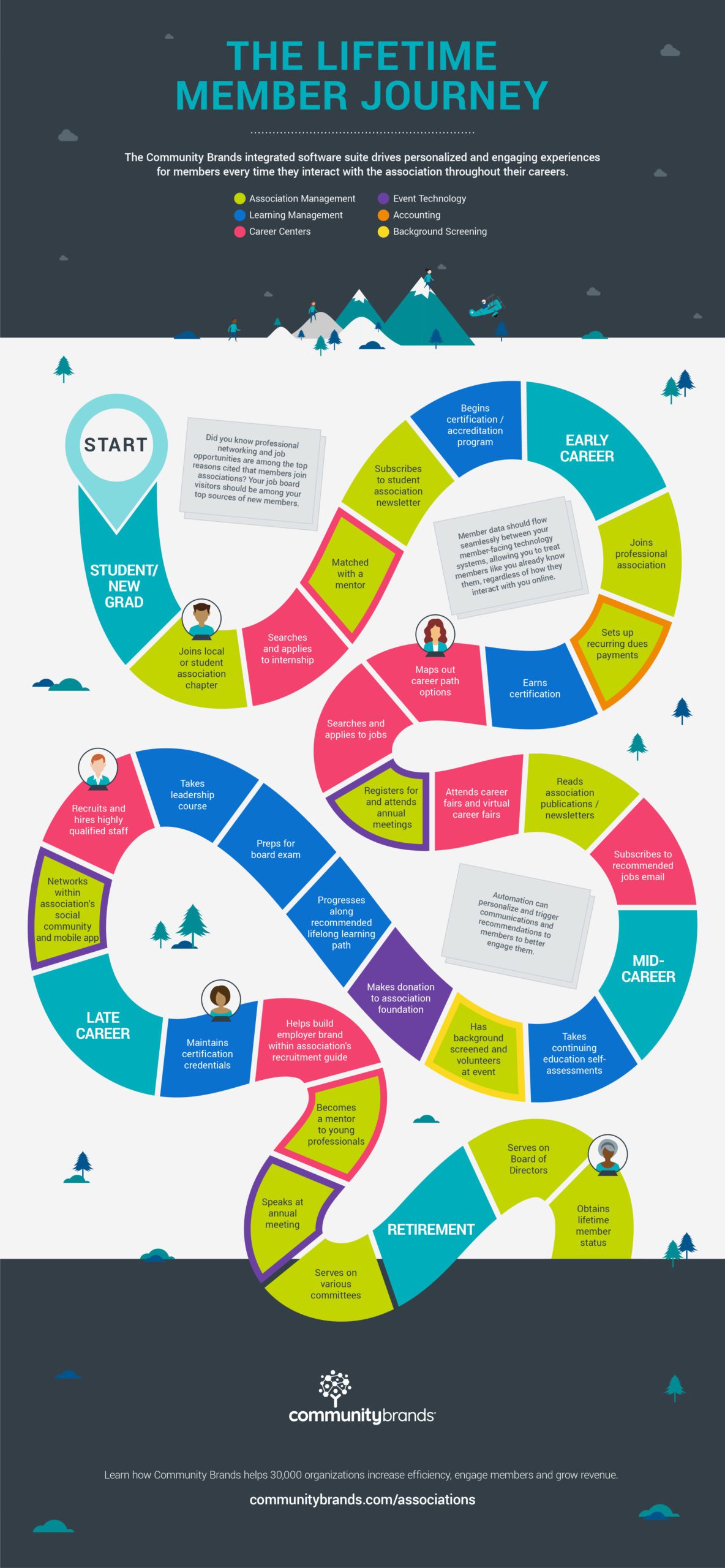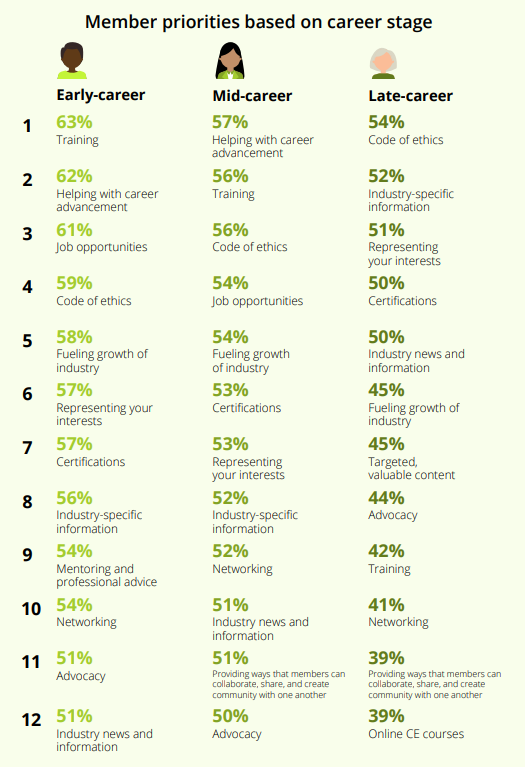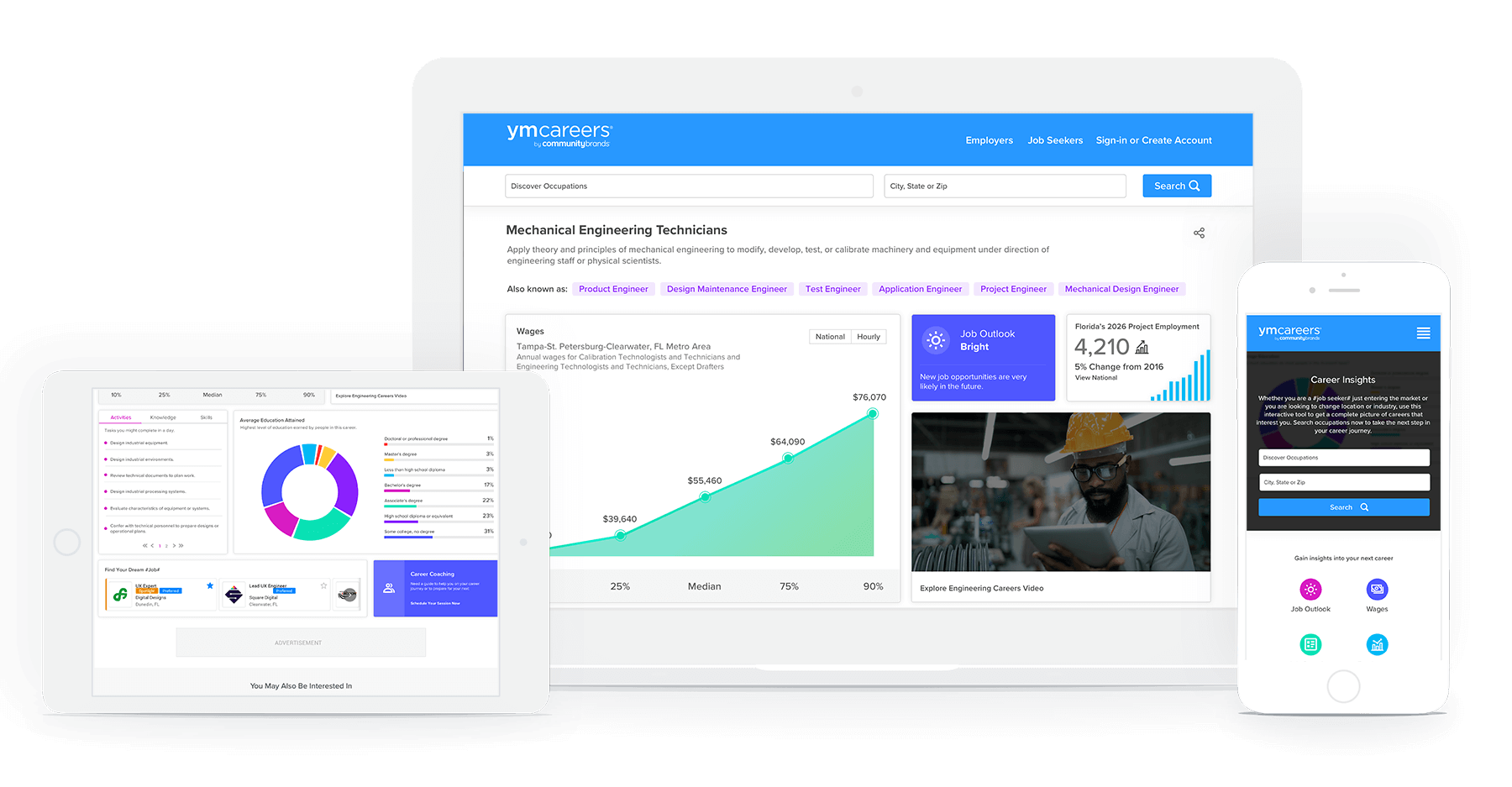Your association’s membership base represents a range of career stages – from students/new grads and early careerists to mid-careerists and late careerists. Your association can be the top career development destination for your industry by offering support for members at every career stage.
This approach will allow you to improve the lifetime member journey, ultimately helping you to retain and grow your association membership.

Let’s look at each career stage in the lifetime member journey and ideas for how you can support members along the way:
Students/New Grads
When students and new graduates join a student or local association chapter, they often want to search and apply for internships to gain experience and kick off their careers. They also find value in being matched with a mentor and being connected with a certification and accreditation program.
You can help students and new graduates start their careers off strong by providing an online internship board and mentor board so that they can easily find the internships and mentors they seek. Also, point them to your association’s professional learning program to help them find the credentials they might be after.
Early Careerists
The 2023 Association Trends Study by Community Brands indicates that early careerists place high value on job opportunities and help with career advancement. At this career stage, members are eager to search and apply for jobs in your industry. You can help them by providing them with an online job board to connect them with the job opportunities they’re seeking.

You can also help these members advance their careers by:
- Hosting career fairs to help members meet face-to-face (in-person or virtually) with employers
- Helping them find career advice and map out their career path options
- Offering professional learning opportunities to help them work on their continuing education and prepare for and earn certifications and credentials.
Mid-Careerists
This group might find themselves unemployed, wanting to make a career change, needing to return to the workplace after a gap in employment, or wanting to take the next step in their careers. So, you might not be surprised that, according to the 2023 Association Trends Study, help with career advancement is the top member priority for those who are mid-career. This group also places high value on training, job opportunities, and certifications.
Offer a career planning portal to help your members who are mid-career by giving them professional guidance, including career advice, suggested learning paths, and data to help them make informed decisions about their careers. Also, use a modern learning management system (LMS) to provide career-building professional education opportunities in formats that accommodate members’ budgets, schedules, learning preferences, and career goals.

Career Planning Portal by YM Careers
Late Careerists
As members move into the later stages of their careers, they are less focused on job opportunities. They might be more interested in becoming mentors to younger professionals, finding advice on how to stay relevant in their careers, or timing their retirement. They’re also good candidates for wanting to promote their companies’ brand and job openings to younger members.
Point these members to your association’s online career planning portal for help with navigating this stage of their careers. You might also invite them to purchase booths at your association’s career fairs and maybe even take out an ad in your association’s recruitment guide.
In your members’ eyes, the value your association provides will evolve as they move through their careers. Make sure that your organization understands what members want and need at each stage of their career and do everything you can to deliver value on what they find most important.



